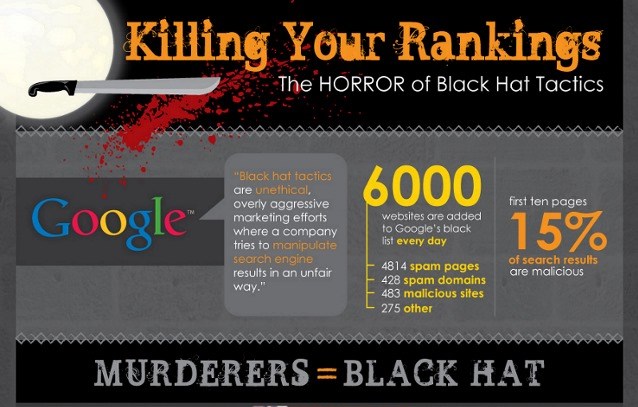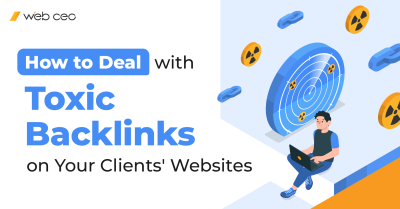
(No whales were harmed in the making of this image.)
Search engine optimization is one of those business components that are made to sound complicated, but in reality, it’s actually fairly straightforward and follows simple logic.
SEO can be intimidating because it’s often spoken about in conjunction with confusing business terms and other website jargon that can be overwhelming.
To help simplify SEO services and make them easier to understand, we’ve put together some useful tips that will help you grow comfortable with SEO and teach you all the basics that you need in order to understand how it works, how you can get SEO done yourself and why it’s so important to the success of your small business.
1. SEO Explained in Simple Terms
When you use a search engine, you type something in, hit enter and then you’re presented with a bunch of results.
It might sound really basic and you might know this already, but the search engine isn’t actually reading your question or even making sense of it.
It probably doesn’t even know what you want. What it does know are the words you used.
Those keywords you use in your search will then be searched for in Google’s enormous database of websites. If Google thinks that a website is relevant to the terms you searched, then it will display those websites as a valid result and place it on the list of results.
Google also ranks these results based on how relevant it thinks they are to your search terms. For example, if you type in “apple pie recipes” then you’re going to get a huge list of results for what Google thinks is the most relevant apple pie recipe. Tools like WebCEO’s Keyword Research can help you identify the right keywords that align with what your potential customers are searching for.
You won’t see apple tarts or blueberry pies in the search results, and that’s because they aren’t relevant to words you typed in.
If you add extra terms like “gluten-free apple pie recipes”, then Google will look through its database once again and display what it thinks are the most relevant gluten-free apple pie recipes.
While it sounds like common sense, it highlights the basics of how Google works. It ranks websites based on how relevant they are to the user’s searched terms and will look for the best results based on what it knows about a website.
The goal of SEO is to modify your website so that it’s more attractive to Google searches. If you sell phones, then the word “phone” should appear several times on your web pages so that it boosts your relevancy.
Of course, you can’t just simply repeat the word “phone” a hundred times and hope it boosts your rating. Other factors like how popular your website is and how usable it is on mobile devices can also affect its rating. This is where the WebCEO’s Website Audit tool comes in handy, helping you analyze and improve these aspects of your site.
No one knows how Google’s algorithms exactly work. While Google does post plenty of news regarding updates to its search algorithms, no specifics are given so that SEO experts can’t abuse the system for their own gain.
It is designed to be a fair system that naturally ranks websites based on how good they are, not how many keywords and links they add.
2. Black and White Hat SEO
There are two main forms of SEO: black and white hat. Both have their advantages and disadvantages.
However, white hat SEO is the clear winner when it comes to long-term results, which is what you should be after if you want to create a thriving business.
Black hat SEO refers to shady underhanded methods of boosting your Google ranking. It’s rarely done now due to the strict regulations that Google has been placing on offenders.
If Google finds that your site has been using illicit or unnatural methods of gaining ranks, then it will permanently block your website from the search results, never to be seen again unless you appeal against it.
Black hat methods include spamming links and keywords everywhere, using hidden text as a way to trick Google’s search algorithms and also spamming their own website link in blogs all over the internet.
White hat SEO refers to natural methods to gain ranks. For example, by writing good content that is rich in relevant keywords, Google can tell that you’ve put something original on your website. This is considered a positive contribution to the Internet’s overall quality and will be favored over reworded, copied, or stolen content. Tools like WebCEO’s SEO Content Assistant can help ensure your content is original and keyword-rich.
Another form of white hat SEO is blogger outreach. By linking to your own website naturally through blog posts and articles, you can generate an authentic audience that reads your content and aligns themselves with your subject matter.
In short, if you’re planning to build a sustainable business and want to rely on SEO for good results, focus on white hat methods so you don’t risk being blacklisted by Google’s search algorithms.
3. High Quality Content
As mentioned above, quality content is one of the best ways to naturally build an audience and gain attention through search engine optimization.
You should aim to include a variety of different content types in your website whenever possible, and here are a couple of examples to give you some ideas.
- Blog posts – If your website doesn’t have a blog yet, then it’s a good idea to create one and attach it to your website, A blog is capable of delivering plenty of unique types of content and you’d be surprised at how effective it is for improving your SEO. Since blog posts are typically filled with lots of unique content, there are many chances to add links to product pages, service descriptions and to add keywords in naturally.
- Videos – Videos are additional forms of content that can supplement the user’s viewing experience in a grand way.
- News posts – Much like blog posts, new posts are appreciated because they can include many keywords and links that will assist in your SEO.
- Guides – Guides are some of the most commonly searched types of content. This is especially important if your products can be confusing or too advanced for basic users.
- Top lists – Top lists are a good way to write about your content and to link to your products. You can add plenty of pictures, link out to other websites or types of content and even add videos.
- Product descriptions – Product descriptions are often indexed by Google, so make sure you add a description to everything you sell.
Adding content to your website can be a lucrative investment if you’re willing to put in the time and effort to write it yourself. Alternatively, consider recruiting freelancers or an outsourcing service to help you create content for your business.
Some Final Words
As you can see, SEO really isn’t that hard to understand. It’s all about building a better website.
Thanks to changes in Google’s search ranking algorithms, it’s become hard to abuse for your personal gain which means you’re better off just creating a website that offers a great experience for its users.
Whether it’s optimizing your website for mobile devices, adding a blog with lots of quality content or relying on blogger outreach to help extend your network of links, there are plenty of ways that SEO can help promote your business.
As long as you’re smart about how you approach SEO, you’ll find that it can be incredibly easy to grasp and you’ll be ranking high in Google search results before you know it.
Just avoid underhanded methods of SEO and focus on the overall quality of your website if you want safe long-term success over instant results.





